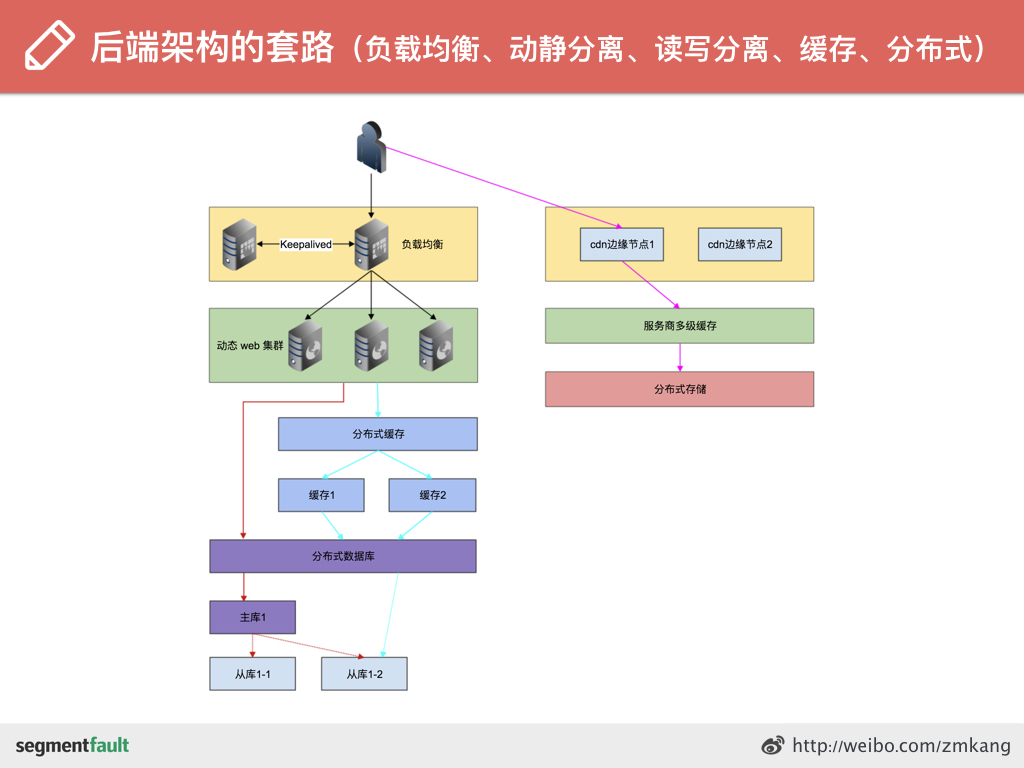关于PHP你可能不知道的-PHP的事件驱动化设计
最近在做一个需要用到异步PHP的项目, 翻阅PHP源码的时候,发现了三个没有用过的模块,sysvsem,sysvshm,sysvmsg,一番研究以后,受益非浅。
在PHP中有这么一族函数,他们是对UNIX的V IPC函数族的包装。
它们很少被人们用到,但是它们却很强大。巧妙的运用它们,可以让你事倍功半。
它们包括:
信号量(Semaphores)
共享内存(Shared Memory)
进程间通信(Inter-Process Messaging, IPC)
基于这些,我们完全有可能将PHP包装成一基于消息驱动的系统。
但是,首先,我们需要介绍几个重要的基础:
- ftok
int ftok ( string pathname, string proj )
//ftok将一个路径名pathname和一个项目名(必须为一个字符), 转化成一个整形的用来使用系统V IPC的key
- ticks
Ticks是从PHP 4.0.3开始才加入到PHP中的,它是一个在declare代码段中解释器每执行N条低级语句就会发生的事件。N的值是在declare中的directive部分用ticks=N来指定的。
function getStatus($arg){
print_r connection_status();
debug_print_backtrace();
}
reigster_tick_function("getStatus", true);
declare(ticks=1){
for($i =1; $i<999; $i++){
echo "hello";
}
}
unregister_tick_function("getStatus");
这个就基本相当于:
function getStatus($arg){
print_r connection_status();
debug_print_backtrace();
}
reigster_tick_function("getStatus", true);
declare(ticks=1){
for($i =1; $i<999; $i++){
echo "hello"; getStatus(true);
}
}
unregister_tick_function("getStatus");
消息,我现在用一个例子来说明,如何结合Ticks来实现PHP的消息通信。
$mesg_key = ftok(__FILE__, 'm');
$mesg_id = msg_get_queue($mesg_key, 0666);
function fetchMessage($mesg_id){
if(!is_resource($mesg_id)){
print_r("Mesg Queue is not Ready");
}
if(msg_receive($mesg_id, 0, $mesg_type, 1024, $mesg, false, MSG_IPC_NOWAIT)){
print_r("Process got a new incoming MSG: $mesg ");
}
}
register_tick_function("fetchMessage", $mesg_id);
declare(ticks=2){
$i = 0;
while(++$i < 100){
if($i%5 == 0){
msg_send($mesg_id, 1, "Hi: Now Index is :". $i);
}
}
}
//msg_remove_queue($mesg_id);
在这个例子中,首先将我们的PHP执行Process加入到一个由ftok生成的Key所获得的消息队列中。
然后,通过Ticks,没隔俩个语句,就去查询一次消息队列。
然后模拟了消息发送。
在浏览器访问这个脚本,结果如下:
Process got a new incoming MSG: s:19:"Hi: Now Index is :5";
Process got a new incoming MSG: s:20:"Hi: Now Index is :10";
Process got a new incoming MSG: s:20:"Hi: Now Index is :15";
Process got a new incoming MSG: s:20:"Hi: Now Index is :20";
Process got a new incoming MSG: s:20:"Hi: Now Index is :25";
Process got a new incoming MSG: s:20:"Hi: Now Index is :30";
Process got a new incoming MSG: s:20:"Hi: Now Index is :35";
Process got a new incoming MSG: s:20:"Hi: Now Index is :40";
Process got a new incoming MSG: s:20:"Hi: Now Index is :45";
Process got a new incoming MSG: s:20:"Hi: Now Index is :50";
Process got a new incoming MSG: s:20:"Hi: Now Index is :55";
Process got a new incoming MSG: s:20:"Hi: Now Index is :60";
Process got a new incoming MSG: s:20:"Hi: Now Index is :65";
Process got a new incoming MSG: s:20:"Hi: Now Index is :70";
Process got a new incoming MSG: s:20:"Hi: Now Index is :75";
Process got a new incoming MSG: s:20:"Hi: Now Index is :80";
Process got a new incoming MSG: s:20:"Hi: Now Index is :85";
Process got a new incoming MSG: s:20:"Hi: Now Index is :90";
Process got a new incoming MSG: s:20:"Hi: Now Index is :95";
看到这里是不是,大家已经对怎么模拟PHP为事件驱动已经有了一个概念了? 别急,我们继续完善。
- 信号量
信号量的概念,大家应该都很熟悉。通过信号量,可以实现进程通信,竞争等。 再次就不赘述了,只是简单的列出PHP中提供的信号量函数集。
sem_acquire -- Acquire a semaphore
sem_get -- Get a semaphore id
sem_release -- Release a semaphore
sem_remove -- Remove a semaphore
具体信息,可以翻阅PHP手册。
- 内存共享
PHP sysvshm提供了一个内存共享方案:sysvshm,它是和sysvsem,sysvmsg一个系列的,但在此处,我并没有使用它,我使用的shmop系列函数,结合TIcks
function memoryUsage(){
printf("%s: %s<br/>", date("H:i:s", $now), memory_get_usage());
//var_dump(debug_backtrace());
//var_dump(__FUNCTION__);
//debug_print_backtrace();
}
register_tick_function("memoryUsage");
declare(ticks=1){
$shm_key = ftok(__FILE__, 's');
$shm_id = shmop_open($shm_key, 'c', 0644, 100);
}
printf("Size of Shared Memory is: %s<br/>", shmop_size($shm_id));
$shm_text = shmop_read($shm_id, 0, 100);
eval($shm_text);
if(!empty($share_array)){
var_dump($share_array);
$share_array['id'] += 1;
}else{
$share_array = array('id' => 1);
}
$out_put_str = "$share_array = " . var_export($share_array, true) .";";
$out_put_str = str_pad($out_put_str, 100, " ", STR_PAD_RIGHT);
shmop_write($shm_id, $out_put_str, 0);
?>
运行这个例子,不断刷新,我们可以看到index在递增。
单单使用这个shmop就能完成一下,PHP脚本之间共享数据的功能:以及,比如缓存,计数等等。





评论 (0)